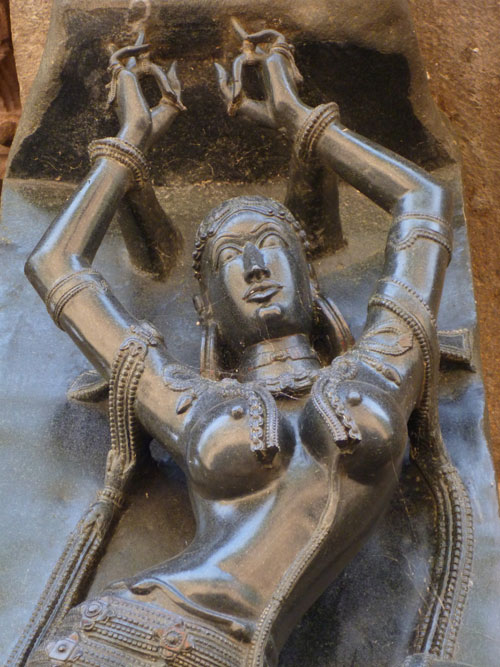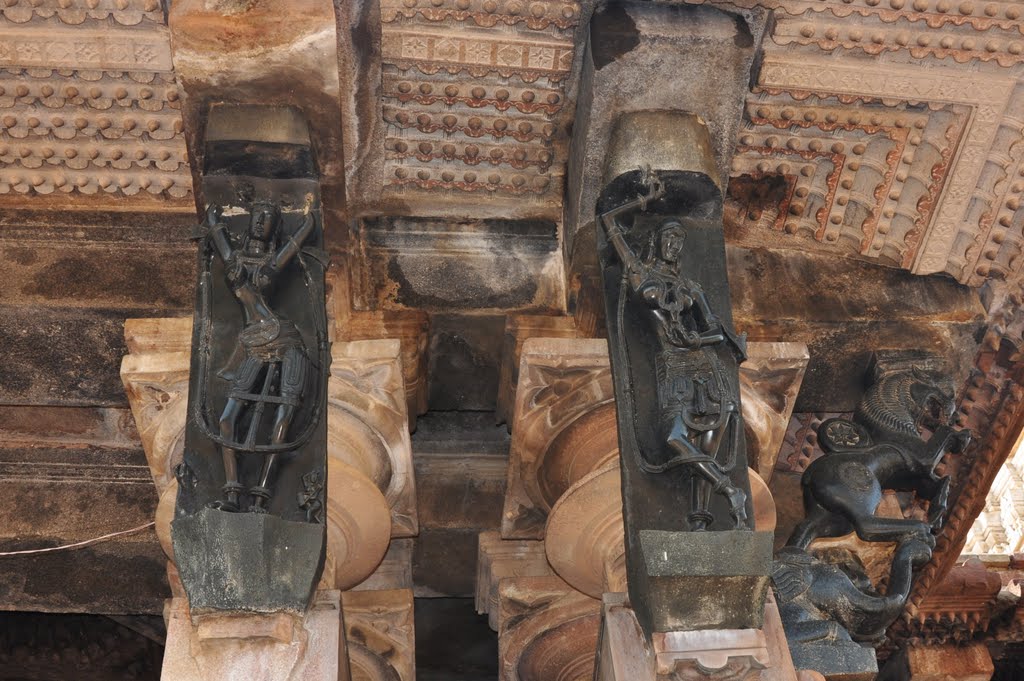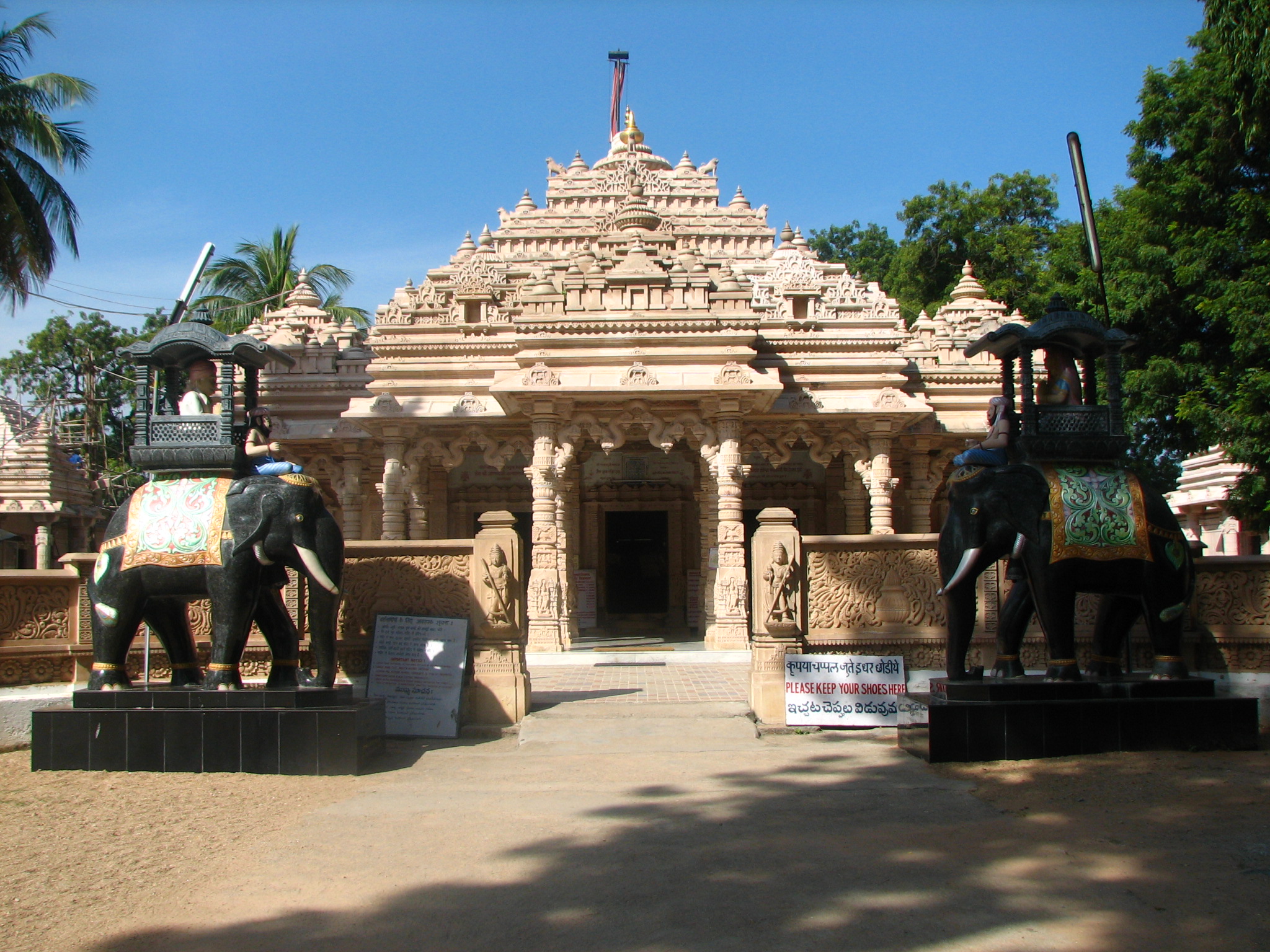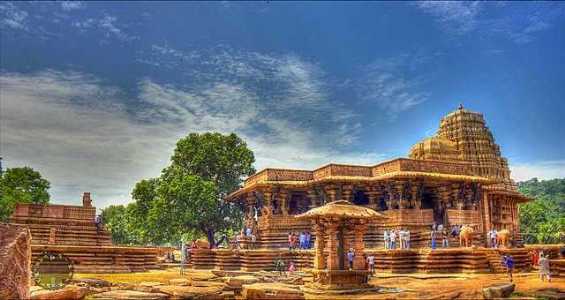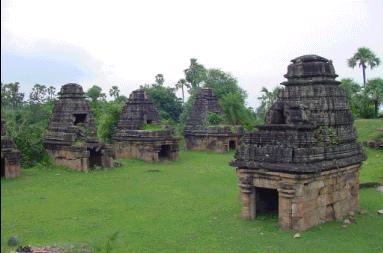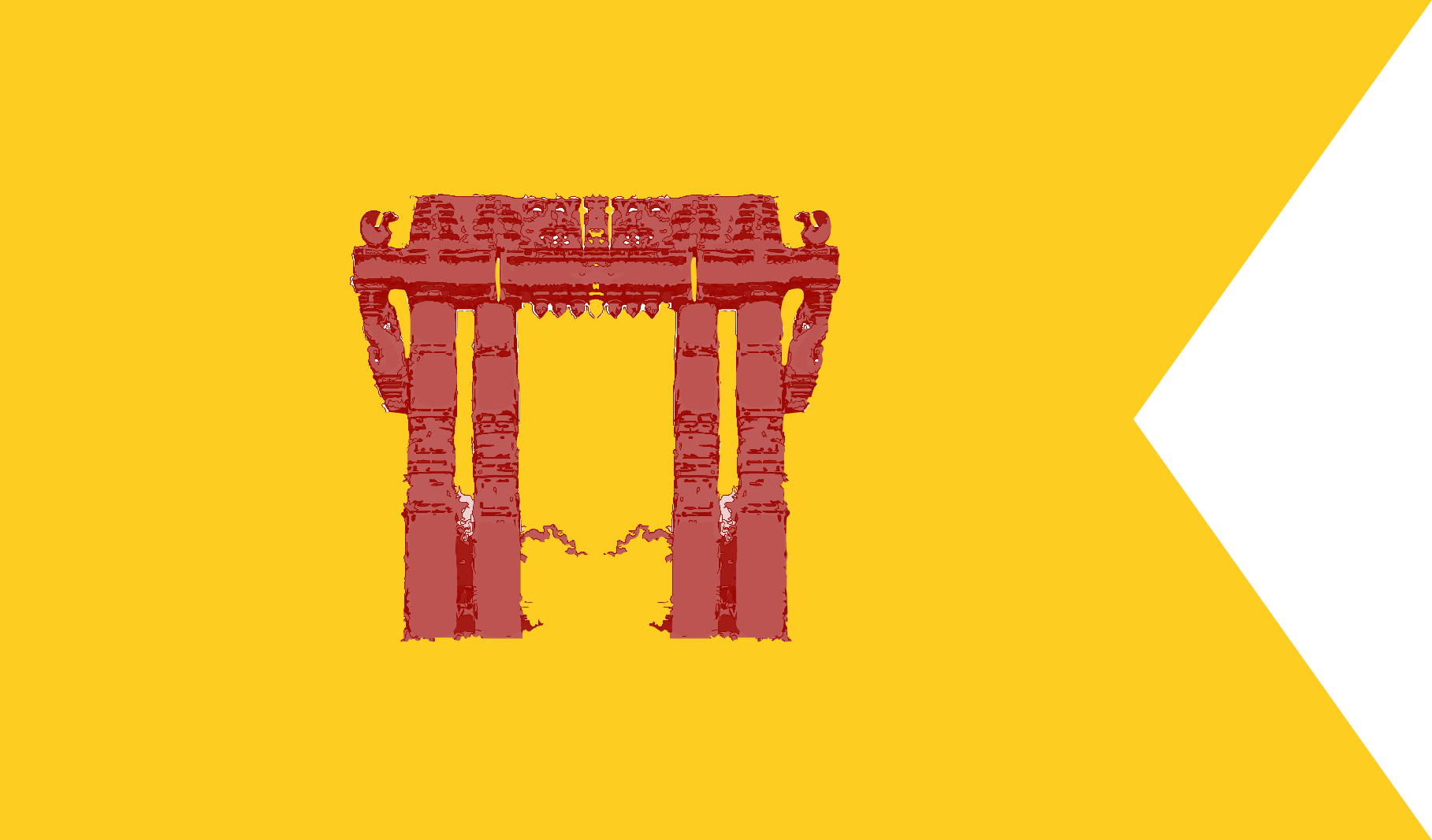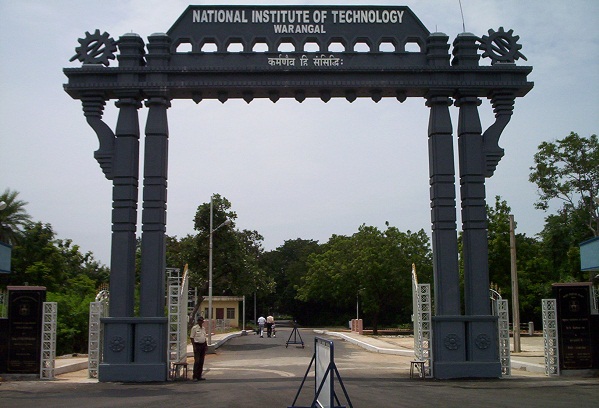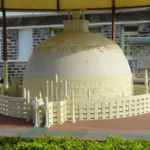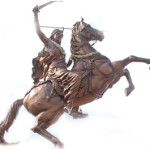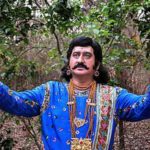After Amaravati, the second capital of the Telugus was Warangal (also referred to by its Sanskrit name, Ekasila). Literally meaning “One Stone” (Oru gallu), the great capital of the Kakatiyas long stood truly as a “single rock” of Dharma defying Delhi.
Those of you following us on twitter would have read our tweets giving snapshots of the glories of this once flowering citadel of Dharma. This post will not only expand upon them, but explore new, especially visual, areas as well.
Background
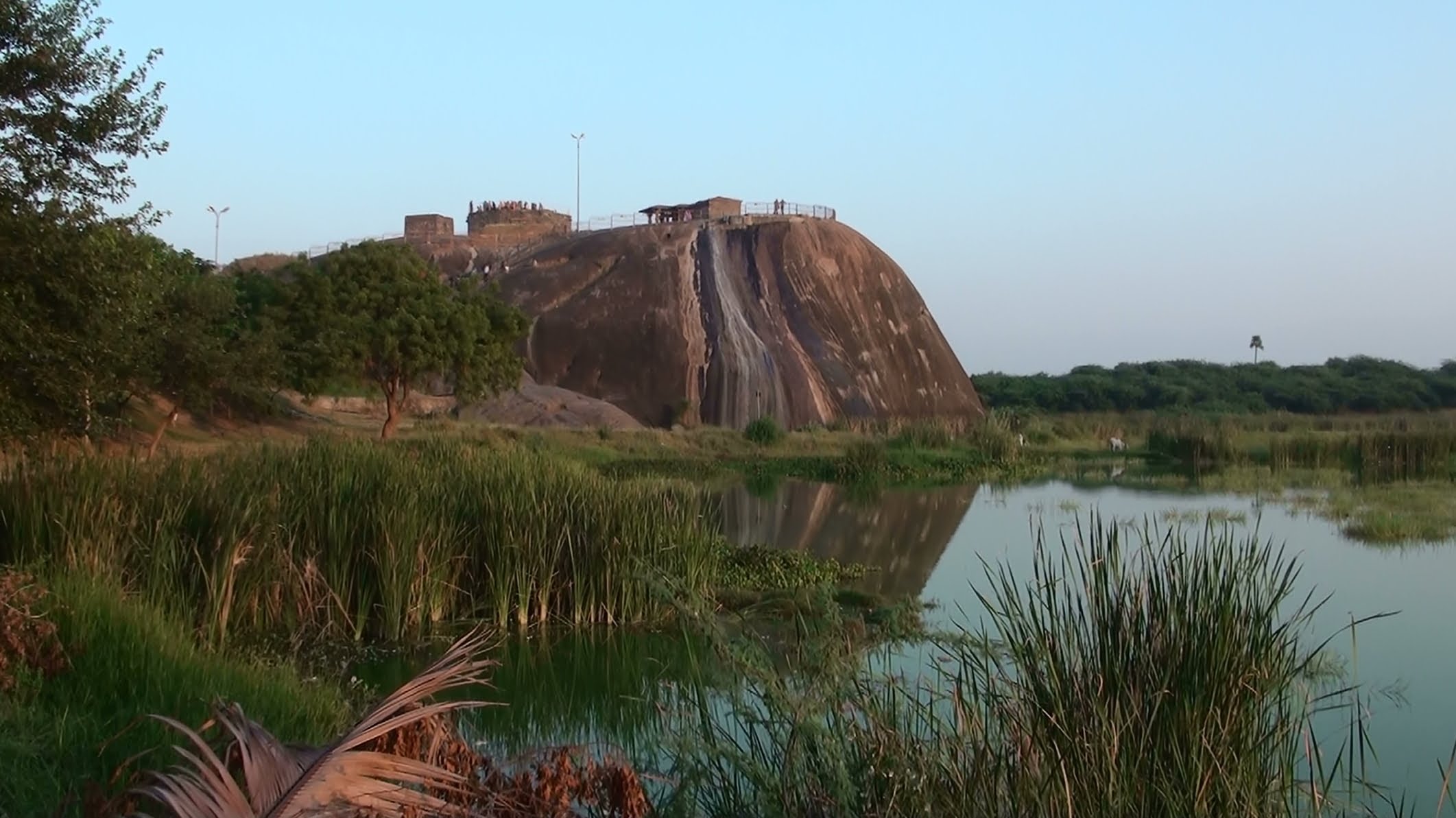
While settlements in the area date as far back as the Chalukyas (who built the nearby Bhadrakali temple), Warangal truly became a city under the Kakatiyas (Kaakatheeyas), at least since the days of Rudra I. Construction of the fortress-capital took place under the greatest ruler, Ganapati Deva, who shifted the government from Hanumakonda. It was completed under his daughter, Rudrama Devi, some time after. In fact, despite the granite strength of the walls, the feminine touch of the Maharani of the Kakatiyas was credited for the ornate carvings of the stout citadel.
Located in new Telangana State, Ekasila-nagari was the capital of the historical Andhra desa that reasserted itself after the ending of the Satavahana dynasty and the dominance of the Chalukyas & Cholas in the land of the Telugus. In fact, after ancient Amaravati, it was medieval Warangal which was called “Andhranagari”.
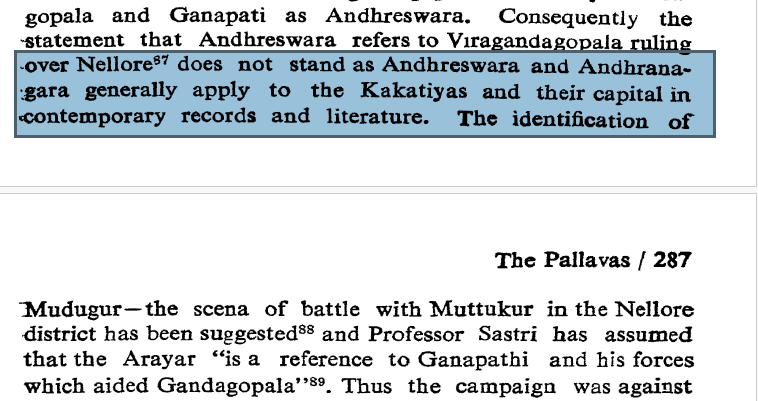
Geographically, it is about 150 km from Hyderabad and 10 km from Hanumakonda. In fact, Warangal-Hanumakonda-Kazipet are collectively referred to as the Tri-City area. After the Twin Cities, modern Ekasila is the second largest urban agglomeration in Telangana.
Palampet, Pakhal, and Ghanpur (Ghanapuram fort) are also in the general vicinity of Warangal. Should the district ever be renewed in vitality, these places would also be counted in a putative Metro area.
Fort
One of the most redoubtable forts of India, Warangal stubbornly stood as the Telugu thorn in the side of the Turks, first under the Kakatiyas and later under the Musunuri Nayaks. Its defenders were able to accomplish this through a strategic layout of outer and inner moats, secondary mud walls, and an intimidating granite primary wall. Built with cyclopean stone masonry, the inner wall was a fearsome obstacle for attackers. The outer earthen wall was no less ingenious as rocks from catapults would famously bounce off it, much to the consternation of besiegers. Its well sculpted battlements provided crenelated defense for the countless archers who once manned them (900,000 by one count). Recent excavation by archaeologists uncovered a third ring of fortification inside.
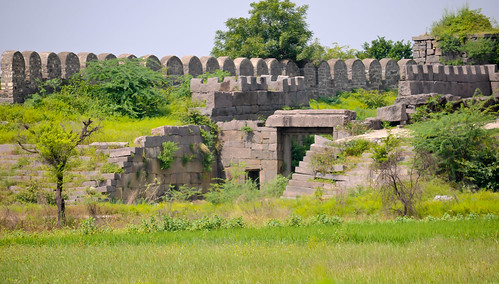
Almost poetically, there were 77 towers once commanded by 77 Nayaks. The main fort, however, had 45 towers and was 5km in circumference. It was spread out over 19kms. It was also very well-supplied with water, both through lakes inside the fort and canals/moats outside of it.
In a triumph of irrigation, a number of man-made bodies of water were constructed by the Kakatiyas.

City
Truly the “City of Stone & Lakes” in the land of the Telugus, there is a bit of Warangal in the heart of every Andhra (whether AP or TS). From its lush vegetation, to its resplendent waterways, to the grandeur of its granite, the city, citadel, and structures are verily
A Vision of Telugu Unity.
Nearby Pakhal Lake was created as a sanctuary for the Warangal Royals. Some accounts refer to it as a summer palace. In fact, the artificial body of water dates back to the earlier Kakatiyas. The last Kakatiya King, Prataparudra is credited with the construction of a stone bund across it.
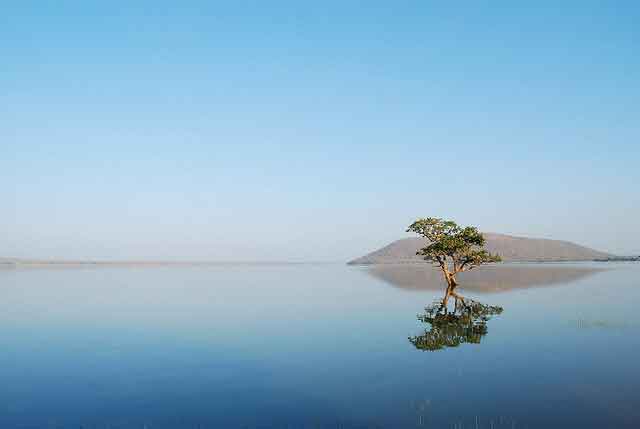
There were a number of extensions (suburbs) as part of the old city. One such famous addition was Panukantivada. This was built specially for settlers from Nalgonda district, who had been invited to settle down in the rajdhani.
Art
The Art of Warangal (and associated structures) is virtually synonymous with stone sculpture. Indeed, the polished granite and elongated figures are seen as almost the trademark style of the Lords of Kakatipura.
This style of physiognomy is considered an innovation and a departure from past convention in sculpture (Silpa Sastra). Indeed, the Royals of Warangal should be commended for patronising such artistic experimentation. Art should not merely reprint standard practice, whether textual or not, but take inspiration from the text to explore the artist’s own creativity, resulting in a more vibrant end-product.
The most famous specimens from the era are the polished statuary of the Madanika dancers above and the alert Nandi below. Both are from the Ramappa Temple in Palampet.

This Nandi statue is considered unique as it was shaped to be uncharacteristically elongated and at attention. Typically, Nandi murthis are focused and facing directly at the Shiva-linga, but that is not the case at the Ramalingeshwara Temple of Ramappa.
Despite the destruction wrought by Central Asian invaders, sculptures at Warangal fort itself have managed to survive as well. The Pandit above is also emblematic of the experimental nature of Warangal Art, which did not merely repeat time-tested patterns, but broke new ground and invented new technique and approaches.
Painting
While most famous for its statuary, Warangal Art also boasts specimens of Chitra-sastra (Science of Painting). At one time, at least 1000 paintings are thought to have been present in the capital. In fact, the painting gallery (Chitra Sala) of Prataparudra’s favorite courtesan, MachalDevi, was particularly famous. It notably depicted scenes from the Siva Purana, Krishna & Gopis, as well as various erotic pairings such as Tara with Chandra, Menaka with Viswamitra , and Rati with Manmatha (God of Love). Other examples include the Cherial Painting above from nearby Pillalamarri. The Blue Samudra-manthan painting at Ramappa dates to the Kakatiya era as well.
A Chitramandapa for public entertainment is also said to have existed at Warangal. It featured different scenes from historical battles fought by the heroic Brahma Naidu.
Architecture
Chalukya Heritage
The Heritage of Warangal includes the efforts of the Kannada Chalukya and Rashtrakuta dynasties. Their legacy is still seen today in a number of Warangal area temples. Vimanas (heavenly vehicles, houses of God) or more specifically Sikharas (towers surrounding a sanctuary) were historically constructed in various styles: Nagara (mostly North India), Dravida (mostly South India), Kalinga (Odisha), and Vesara . The Chalukyas developed a new style called Rekhanagara, which was more parabolic in nature, and another called Bhumija.
Jain Temple just outside Warangal Fort
Padmakshi Temple
Bhadrakali Temple
Kakatiya Grandeur:
The Kakatiyas continued this heritage from the Chalukya era, but then took this inspiration to make their own name. The Pillalamarri inscription, dated to 1195 C.E., states the following:
Beautiful, as high as the peak of kailasa, with the clouds, kissed by their banner clothes, are the golden kalasas placed on the top-of these temples of Erakeswara and Naameswara
Beautiful as they were, only a few of these Kakatiyas temples have emerged unscathed from war. Kakatiya vimanas can be broadly classified in two varieties (1) the stepped pyramidal type (2) the storied pyramidal type. They constructed sikharas in mainly Nagara and Dravida styles.
After countless battles and numerous wars, the Entrance to the Fort of Warangal stands defiantly to this day. Like the city and rulers who defended it, it is a stubborn reminder of the stubborn will of the Telugus.
Keerthi Thorana
The Trademark Warangal Torana is of course the most famous structure of the site. Indeed, it has come to define its medieval past and, as readers will see below, even its modern image.
Use of the Thorana goes as far back as the Vedic period, and smaller versions featured even in villages. The earliest examples of grand stone Thoranas are seen in Buddhist structures such as Bharhut and Sanchi. Amaravati in Coastal Andhra also displayed Toranas, as evidenced by the surviving statuary and stone bas reliefs.
They, however, truly reached their zenith under the Kakatiyas. Thoranas were an important and distinctive aspect of Kakatiya architecture, and were used in sites beyond Warangal, such as Nandikandi and Kolanupaka’s Somesvara Temple. Nevertheless, the Keerthi Thorana of Warangal is the gold standard. The ends of the Thorana’s lintels are ornamented with hamsas, which symbolize keerthi (fame). Thus, the improvement of the indigenous Indic gateway is the signature contribution of the Warangal style to India’s Architecture.
Warangal Fort Shiva Temple (interior)
Svayambunatha Temple
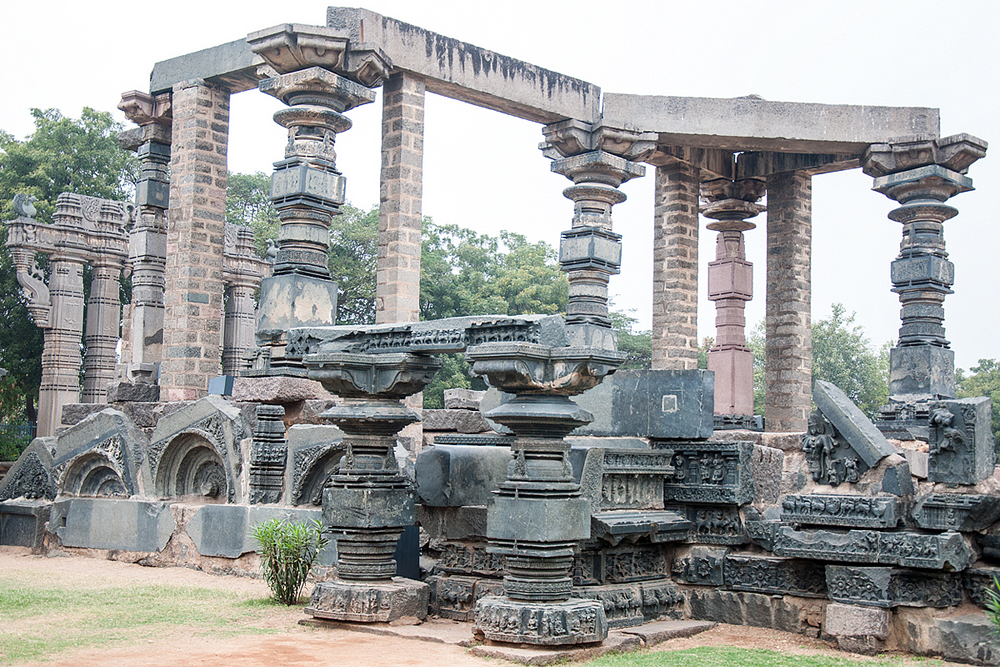 The true ornament of Warangal fort, however, must have been the Svayambhunatha Temple. The colossal proportions of this complex are corroborated by a contemporary work called the Kreedabhiraamamu as well as the still extant mandapa. It is primarily the mandapa that remains today, and the Kakatiyas devotion to Lord Shiva made them construct this Mandir as the main Architectural attraction of their capital.
The true ornament of Warangal fort, however, must have been the Svayambhunatha Temple. The colossal proportions of this complex are corroborated by a contemporary work called the Kreedabhiraamamu as well as the still extant mandapa. It is primarily the mandapa that remains today, and the Kakatiyas devotion to Lord Shiva made them construct this Mandir as the main Architectural attraction of their capital.
This was also adorned by free standing pillars called nandhisthambhas, nagasthambhas, and dheepasthambhas. These were typically placed in front of the temple itself, as can be seen here. This is considered another marker of Warangal Architecture and its style.
Khush Mahal
One of the very interesting stories coming out of Warangal’s time-worn heritage is the curious case of Shitab Khan. The Bahmani governor is rumored to have been a Telugu convert named Sitapati Raju. He later took advantage of trouble within the Sultanate to declare independence. As a Telugu, he was a patron of the native Telugu literature and poetry—the Chihtra Bhaaratham was credited to his era. He is said have aimed to restore the indigenous glory of the previous Kakatiya era, and renovated many irrigation tanks and ponds.
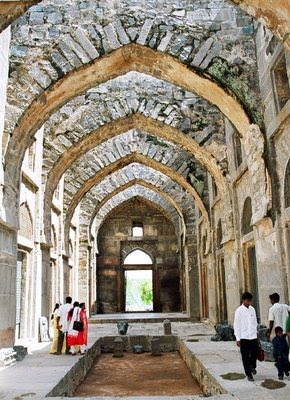
While the iconoclasm of the Turks resulted in the destruction of many temples, numerous idols can be found in the Khush Mahal credited to Shitab Khan. The only remaining palace in this once city of palaces, Sitapati’s structure, like Sitapati himself, eventually escaped the Turks, and was returned to his own people related by blood, in the Coastal regions.
Hanumakonda 1000 Pillar Temple (Veyi Stambha Mandiram)

Built by King Rudra Deva in 1163, it is the iconic temple of the Kakatiyas. Constructed in nearby Hanumakonda, it is considered an architectural gem.
While the gopuram (tower) was tragically knocked down by vandal invaders, the main structure itself has managed to survive the test of time. The pillars of the temple in particular are known for their detail, design, and resplendent polish.
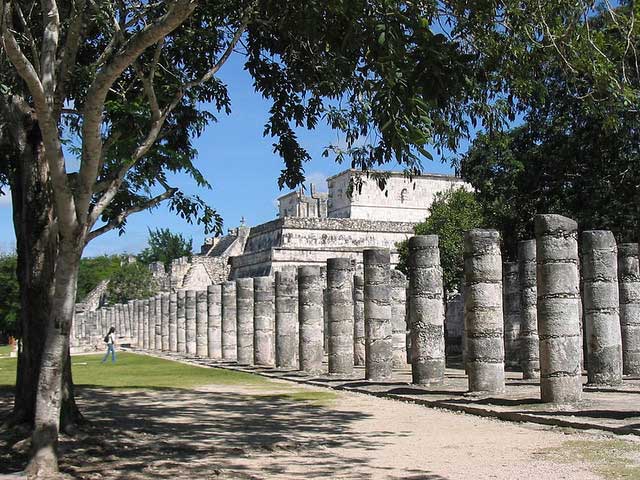 The pillar itself embodies the sophistication of traditional Dharmic architectural precepts. The Kakatiyas themselves are famous for their polished sthambhas. They used the Brahmakanta variety of pillar, though Silpa Sastras also mention Vishnukanta, Rudrakanta, and Skandakanta (also called Suryakanta and Chandrakanta). Podikas (pillar capitals) are the crowning feature and tended to showcase leafy patterns, floral designs and cobra-hoods.
The pillar itself embodies the sophistication of traditional Dharmic architectural precepts. The Kakatiyas themselves are famous for their polished sthambhas. They used the Brahmakanta variety of pillar, though Silpa Sastras also mention Vishnukanta, Rudrakanta, and Skandakanta (also called Suryakanta and Chandrakanta). Podikas (pillar capitals) are the crowning feature and tended to showcase leafy patterns, floral designs and cobra-hoods.
The ceiling too features intricate carvings in stone along with the trademark Kakatiya stone polish.
Ponds and tanks were also common in traditional Hindu temples. The Veyi Stambhala Gudi was no exception as seen above.
Ramappa Temple in nearby Palampet
Though located a little ways away from Warangal (70 km), Ramappa temple has become closely associated with it and the rule of the Kakatiyas. In a departure from naming convention, which is typically determined by the presiding deity, this Mandir’s appellation is in fact in honor of its Architect: Ramappa. The temple and its eponymous lake are lovely examples of Kakatiya architecture. Credited to general Racharla Rudra (though possibly also Rudra I), the subordinate of King Ganapati Deva, this temple is regarded as emblematic of the unique style of Warangal/Kakatiya Art and Architecture.
Most beautiful are the Madanika Dancer sculptures of lustrous polished black granite and elongated features seen above. They feature as brackets.
Ghanpur group of Temples
Quietly tucked away in the nearby fort town of Ghanapuram, the Ghanpur Group of Temples is an additional stopping ground for any trip to Warangal. 22 in number they remain very close to the style and execution of the Ramappa Temple, and are surrounded by a wall. Built from red sandstone, they are an ocular feast and very much the archetypal vision of Indian ruins amidst lush vegetation. Dedicated to Lord Shiva, they also feature the signature Madanika bracket figures in the archways of temples.
The Kalyanamandapa and Sabhamandapa porches are the most notable architectural sights here. Most significant however is the innovation of mandapas, seen here in the Ekakuta and Trikuta styles of temple. The Kakatiyas also introduced two whole new styles of temple: Panchakuta featured elsewhere (Ramanaujapuram) and Chatuskuta at Panagal’s Somesvara temple.
Dharma

From their earlier Jain inclinations to their later popularization of Shaivism, the Kakatiyas were known as Men (and Women) of Honor and patrons of Dharma.

The Walled City of Warangal itself was said to have contained hundreds of Shiva Temples in its heyday, such as the small one above.
The scenic Bhadrakali temple just outside the city is also well-known, and dates back to the pre-Kakatiya era. It symbolizes the long standing roots of Dharma in the region.
Despite its history of triumph and tragedy, Telugu unity, and colonial rule, Warangal’s many temples have preserved the dharmic traditions of this area.
Walls may be knocked down, statues may be broken, and stones may turn to dust…but Dharma will never die. The struggle and sacrifice of the Telugu leaders of this region is testament to that, as is the history of Telangana.
Dynasties
While the Chalukyas deserve mention for their initial presence and contribution of the adjacent Bhadrakali temple, it is the Kakatiyas who are truly the founding dynasty of Warangal.
Though the Turks themselves only record 5 expeditions to the Andhra country, native sources such as Pratapa-charitra, Vilasa, and the Kaluvacheru copper plate grants record 8 wars in the reign of Prataparudra. Thus the current consensus of 2 Telugu Victories and 3 Turk Victories may, numerically at least, be more in favor of the Kakatiyas than previously thought.
Nevertheless, it was the walls of this citadel of Andhra that stopped the Seunas of Devagiri in their tracks, and stood against the Turks in at least 5 wars. So imposing were the 50 ft walls and 30 ft gates of Warangal, that the Delhi General, Malik Kafur, could not breach them in the 2nd war, and so he began committing atrocities on the women in the surrounding settlements. Thus, while the defenses stood strong and proud, the heart of the King proved soft, and out of concern for his subjects, he relented. The walls were so powerful that it in fact took a brand new type of catapult to finally knock them down. And knocked down they were, as the fifth and final attack proved ruthless in a way only the silent stones of Warangal can retell.
The Delhi interregnum of Malik Maqbul was put to an end a mere few years later by the Musunuri Nayaks. Liberated under Krishna Nayak (Kapaneedu Musunuri) it would remain in Telugu hands for another 50 years. Recent findings (as well as the ruins themselves) are also testament to the iconoclasm of the times.
Tragically, as Telugus have habitually done, infighting and petty jealousies took place. The traitorous Rachakonda Rajas betrayed the Musunuri Nayaks and captured the fort in battle. The Bahmanis took advantage, and the city fell from Nayak rule to the Sultans, and to eventual political unimportance. Through politicking with and eventual cooption of the traitorous Recherla Nayaks, Warangal remained under Turk hands first under the Bahmanis, then Qutb Shahis, and finally the Asaf Jahs. Due to their neglect, Warangal never again regained its former glory.
Future
Modern Warangal district offers much potential for development. The current population is around 32 lakh people, with 51 mandals, and over 1000 villages. A number of colleges/universities have also sprung up, like the NIT and, fittingly, Kakatiya University.
Aside from the numerous Hindu temples, from Bhadrakali and Padmakshi to 1000 pillar and Ghanpur, the Jain heritage of the district, and united Andhra in general, should also be capitalized upon. Most of all, is the entire fort complex of Ekasila-nagaram, which recalls the Vision of Unity that the Kakatiyas of Telangana region so steadfastly fought to give the Telugus.
Sadly neglected since the fall of the Musunuri Nayaks, the Grandeur of Warangal is very much a shadow of its former self. Despite this fact, “Andhra Maha Nagari” lives ever in the hearts of all true Telugus. It is not for nothing that the Keerthi Thorana of Warangal was selected for the 29th State’s emblem. One hopes that with the rise of the new state of Telangana, Warangal’s importance will once again be restored.
References:
- Rao, P.R. History and Culture of Andhra Pradesh. New Delhi. Sterling Publishers. 1994
- http://www.slideshare.net/venkatasivaprasads/history-oftheandhras
- http://www.bharatonline.com/andhra-pradesh/travel/warangal/excursions.html
- Cousens, Henry. Lists of antiquarian remains…in Nizam’s territories. ASI. 1900
- Singh, Satyanarayana. The Art and Architecture of the Kakatiyas. Delhi: Bharatiya Kala Prakashan. 1999
- http://indiatravelogue.com/dest/anp/anp5.html
- http://whc.unesco.org/en/tentativelists/5889/
- http://warangal.nic.in/wglance/wglance.htm
- http://warangal.nic.in/kutsav/gallery.html
- http://nalgonda.nic.in/pangal.htm




